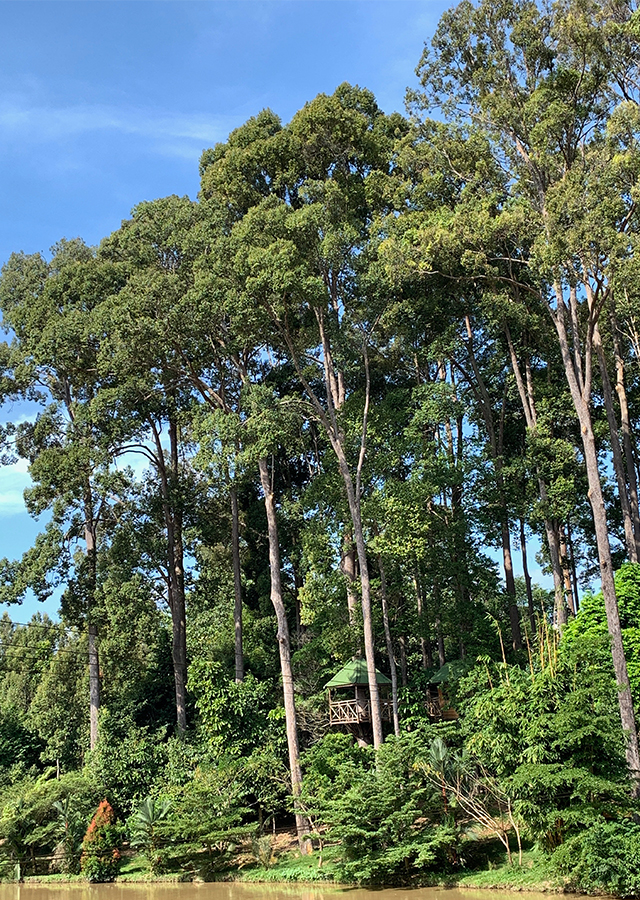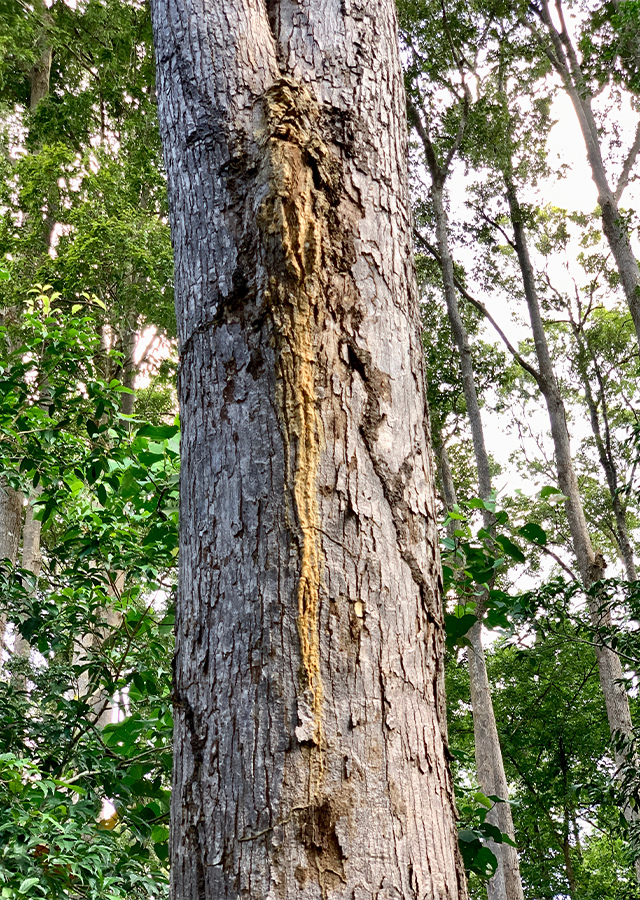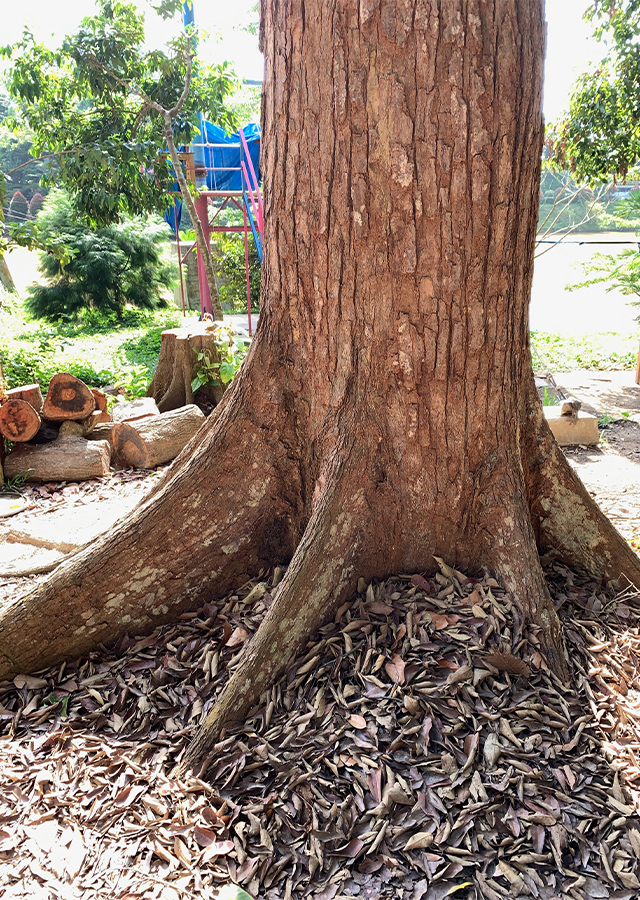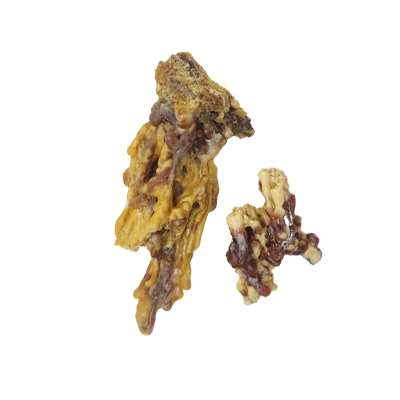Amboina pine
Hopea mengarawan Miq.
Dipterocarpaceae
Location in our garden
Hardwood



Synonym
Hancea mengarawan (Miq.) Pierre
Habitus
Trees. A tapering, conical shape, evergreen monoecious tree that grows up to 50–65 m tall and 1.8 m in diameter
Part Used
Bark
Growing Requirements
Full Sunshine
Need Shade
High Rainfall
Habitat
Forest
Overview
Amboina pine is a coniferous timber tree native to the Philippines and Indonesia (Maluku). It is also known as a major source of Dammar resin, the pale yellow coloured resin vastly utilised in medicine, the pharmaceutical industry and in that of the varnishes and in the production of the linoleum. This tree also commonly grown as an ornamental and is classified as 'Vulnerable' in the IUCN Red List of Threatened Species (2011) because of the heavy exploitation and regeneration in residual stands is insufficient to replace lost populations.
Vernacular Names
Bei qiao shan (Chinese), Harzige kaurifichte (German), Damar gantungan (Malay), Dayungon (Philippines), Almaciga (Spanish), Damar (Indonesia).
Agroecology
This plant is scattered but locally common in lowland rainforests up to 1,200 m altitude. It can grow on a variety of soils, including podzolized sands (in heath forest), ultrabasic soils, limestone, igneous and sedimentary rocks. The species does not tolerate waterlogging. Prefers a pH in the range of 5.5-6.5, tolerating 5-7.5. Older trees grow well in sunny positions, but need the shady, sheltered conditions of the woodland when small.
Morphology
- Roots - tap root with a lot of lateral roots.
- Stems - woody, cylincrical a pale cream, golden brown, to dark reddish or yellowish brown if resinous. The wood is lustrous, the grain mainly straight; texture fine and uniform, generally without distinctive odour or taste, with scaly and fibrous bark.
- Leaves - elliptical, 6-8 cm × 2-3 cm, tapering towards the rounded apex, with solitary resin canals.
- Flowers - mature pollen cones 4-6 cm × 1.2-1.4 cm, subtended by a peduncle c. 3 mm long, microsporophylls with a spoon-shaped apical part of c. 2 mm × 2.5 mm, slightly angled at the apex.
- Seeds - with a short acute projection on one upper corner and a wing on the other. Mature seed cones oval, 9-10.5 cm × 7.5-9.5 cm, seed bracts roughly obtriangular with a small projection near the base on one side.
Cultivation
It propagates by seed and cuttings of leading shoots.
Chemical Constituents
Limonene, biflavone, amentoflavon, β-bisabolene, β-myrcene, alkaloids, steroidss, anthraquinones, flavonoids, saponins, tannins, polyphenol.
Traditional Medicinal Uses
- The essential oil of A. dammara exerts good antibacterial effects against several bacterial strains (Staphylococcus aureus, Bacillus subtilis, Pneumonia aeruginosa, and Escherichia coli).
- The methanolic extract obtained from its leaves was found to be active against Proteus vulgaris.
- The powdered woods of A. borneensis, A. philippinensis and A. dammara are employed to treat headache and myalgia.
Part Used
Reference Sources
- Fern, Ken. (2014). Useful Tropical Plants. Agathis dammara (Lamb.) Rich. http://tropical.theferns.info/viewtropical.php?id=Agathis+dammara. 11-02-2021.
- Frezza, C., Venditti, A., & De Vita, D. et. al. (2020) Phytochemistry, Chemotaxonomy, and Biological Activities of the Araucariaceae Family—A Review. PubMed-Plants 9(7). https://pubmed.ncbi.nlm.nih.gov/32674354/. 11-02-2021.
- Globinmed. (No date). Agathis dammara (Lamb.) Rich. & A.Rich. https://www.globinmed.com/index.php?option=com_content&view=article&id=104965:agathis-dammara-lamb-rich-a-rich-r&catid=286&Itemid=357. 11-02-2021.
- Monaco Nature Encyclopedia. (No date). Agathis dammara. https://www.monaconatureencyclopedia.com/agathis-dammara/?lang=en. 11-02-2021.
- PFAF. (No date). Agathis dammara - (Lamb.) Rich. https://pfaf.org/user/Plant.aspx?LatinName=Agathis+dammara. 11-02-2021.
- Zhifen Chen, Daohang He, Jingdan Deng, Jiaying Zhu & Qiuping Mao. (2015) Chemical composition and antibacterial activity of the essential oil from Agathis dammara (Lamb.) Rich fresh leaves, Natural Product Research, 29:21, 2050-2053, DOI: 10.1080/14786419.2015.1022544. https://www.tandfonline.com/doi/abs/10.1080/14786419.2015.1022544. 11-02-2021.



